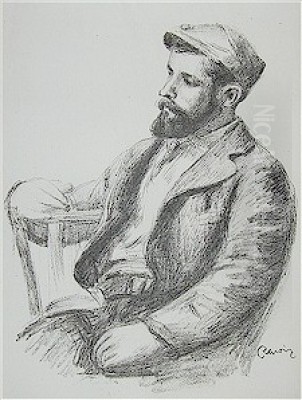
Louis Valtat stands as a significant yet sometimes overlooked figure in the vibrant tapestry of French art at the turn of the 20th century. A painter and printmaker, his career uniquely bridges the gap between the waning light of Impressionism and the explosive color of Fauvism, making him a crucial transitional artist. Active primarily from the late 19th century into the early decades of the 20th, Valtat developed a distinctive style characterized by bold chromatic choices and energetic brushwork, contributing significantly to the evolution of modern painting. His life and work offer a fascinating glimpse into a period of radical artistic change.
Early Life and Artistic Formation
Louis Valtat was born on August 8, 1869, in Dieppe, a coastal town in the Normandy region of France. He hailed from a prosperous family involved in ship ownership, which provided him with a degree of financial security uncommon among artists of his generation. Crucially, his father was an amateur landscape painter himself, fostering Louis's interest in art from a young age and providing early encouragement for his artistic inclinations. This supportive environment was foundational for his later career choice.
The Valtat family later moved to Versailles, where Louis spent his childhood and received his secondary education at the prestigious Lycée Hoche. By the age of 17, his passion for art had solidified into a clear vocational path. In 1887, he made the pivotal decision to pursue an artistic career and gained admission to the renowned École des Beaux-Arts in Paris, the epicenter of the French art world. There, he studied under established academic painters such as Jules Lefebvre and Gustave Boulanger, receiving rigorous training in traditional techniques.
However, Valtat's artistic curiosity extended beyond the confines of the official academy. He also frequented the more progressive Académie Julian, a private art school known for its less rigid atmosphere and diverse student body. It was here that he encountered members of the burgeoning Nabis group, including influential figures like Édouard Vuillard, Maurice Denis, and Paul Sérusier. Exposure to their ideas about subjective color, decorative patterns, and spiritual expression undoubtedly broadened his artistic horizons beyond his academic training.
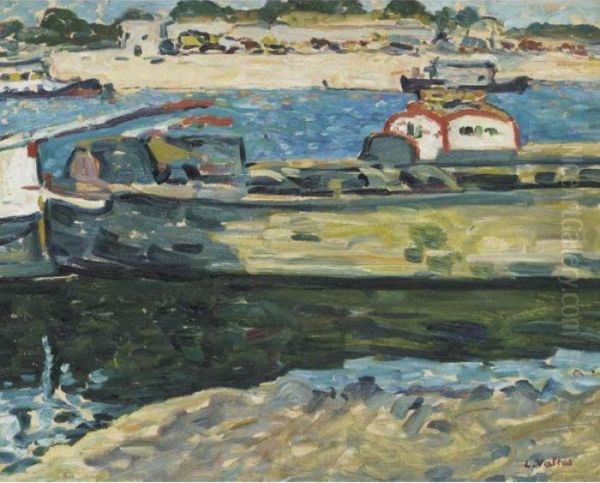
During these formative years, Valtat absorbed the prevailing artistic currents. The influence of Impressionism, particularly the work of Claude Monet and Camille Pissarro, is evident in his early handling of light and broken brushwork. He also experimented with the systematic color theories of Pointillism, pioneered by Georges Seurat and Paul Signac, exploring the optical mixing of pure color dots. These early explorations laid the groundwork for his later, more radical use of color.
The Emergence of a Unique Style
Valtat quickly began to synthesize these influences into a more personal idiom. While appreciating Impressionist and Pointillist techniques, he sought a more expressive and subjective use of color and form. The profound impact of Post-Impressionist masters Vincent van Gogh and Paul Gauguin became increasingly apparent in his work during the 1890s. He adopted their penchant for intense, non-naturalistic color palettes and bold, often heavily outlined forms to convey emotion and structure.
His personal life also intersected with his artistic development. Valtat suffered from tuberculosis, a common affliction at the time. For health reasons, he made frequent trips to the Mediterranean coast of France (the French Riviera, particularly Agay near Saint-Raphaël, where he later bought property) and Spain. These sojourns proved artistically fruitful. The brilliant sunlight, vibrant landscapes, and different cultural atmosphere of the South exposed him to a new intensity of light and color, significantly impacting his palette and reinforcing his move towards brighter, warmer hues.
In 1893, Valtat made his public debut at the Salon des Indépendants, an important venue for avant-garde artists seeking alternatives to the official Salon. His submissions, often landscapes, already hinted at the bold direction his art would take. Around this time, he also formed a significant connection with Henri de Toulouse-Lautrec. In a notable collaboration, Valtat assisted Lautrec in creating painted décor for the Théâtre de l'Œuvre's production of "Le Chariot de terre cuite" in 1895. This project brought him into closer contact with the Parisian avant-garde circle.
Through George-Daniel de Monfreid, a friend and fellow artist (and importantly, a staunch supporter of Gauguin), Valtat also met the sculptor Aristide Maillol. These connections further integrated him into the network of progressive artists working in Paris and the South of France. His style during this period became increasingly characterized by strong contours, simplified forms, and an expressive application of paint, setting the stage for his association with Fauvism.
Valtat and Fauvism
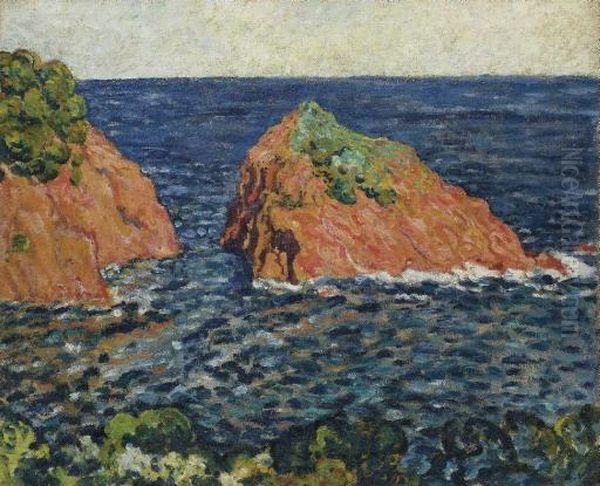
The early years of the 20th century witnessed the emergence of Fauvism, a movement characterized by its radical use of intense, arbitrary color and vigorous brushwork. While the movement is most famously associated with the 1905 Salon d'Automne, Louis Valtat was already employing many of its key characteristics in his paintings several years prior. He is therefore often considered a proto-Fauve or a key precursor to the movement.
In 1905, Valtat exhibited alongside Henri Matisse, André Derain, Maurice de Vlaminck, Albert Marquet, Kees van Dongen, and others in Room VII of the Salon d'Automne. This room became notorious when the art critic Louis Vauxcelles, observing a traditional-style sculpture amidst the wildly colored paintings, famously quipped about "Donatello au milieu des fauves" ("Donatello among the wild beasts"). The term "Fauves" stuck, christening the movement.
Valtat's works in the 1905 exhibition, likely including seascapes and landscapes from his time in the South, contributed to the room's overall impact. While perhaps less strident or "wild" than some works by Vlaminck or Derain, his paintings shared the Fauvist emphasis on color as an independent expressive element, liberated from purely descriptive duties. Critics reacted strongly, with some dismissing the works as examples of "color madness" and "image distortion." However, the exhibition marked a turning point, announcing the arrival of a new, bold direction in modern art.
Valtat's specific contribution to Fauvism lies in his ability to bridge the techniques of Impressionism and Pointillism with the heightened emotionalism and color intensity of the new style. His paintings often retain a sense of light and atmosphere reminiscent of Impressionism, but infused with the arbitrary, vibrant hues characteristic of Fauvism. He used color structurally and expressively, demonstrating a sophisticated understanding honed through his earlier experiments. Works like Les Rochers Rouges dans la Mer (Red Rocks in the Sea) from 1903 clearly anticipate the Fauvist explosion two years later.
Mature Period and Artistic Independence
Although closely associated with the Fauvist moment of 1905, Valtat maintained a degree of artistic independence throughout his career. The Fauve movement itself was relatively short-lived as a cohesive group, and its members soon pursued individual paths. Valtat continued to develop his style, refining his approach to color and composition. While color remained central to his practice, his later work sometimes shows a greater emphasis on structure and form, perhaps reflecting a quiet dialogue with the work of Paul Cézanne, whom he admired.
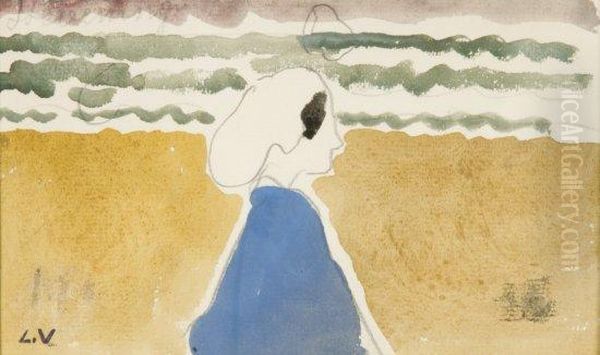
He established a long and warm friendship with the elderly Impressionist master Auguste Renoir. Valtat frequently visited Renoir at his home in Cagnes-sur-Mer on the French Riviera, and the two artists held mutual respect. Renoir reportedly admired Valtat's handling of color and modern sensibility. This connection highlights Valtat's position as a figure respected by both the older generation of Impressionists and his own avant-garde contemporaries.
Valtat's subject matter remained relatively consistent throughout his mature period. He excelled in painting landscapes, particularly the coastal scenes of Normandy and the sun-drenched vistas of Agay and the Esterel mountains near his southern home. Seascapes, bustling harbors, and tranquil garden scenes were recurrent themes. He was also a master of the still life, especially floral compositions, where he could fully explore the interplay of vibrant colors and forms. Portraits and occasional nudes also feature in his oeuvre, often rendered with the same bold palette and energetic brushwork.
He enjoyed a productive relationship with the influential art dealer Ambroise Vollard, who played a crucial role in supporting many avant-garde artists, including Cézanne, Gauguin, Picasso, and the Fauves. Vollard organized exhibitions of Valtat's work, helping to promote his reputation. Valtat continued to exhibit regularly at the Salon des Indépendants and the Salon d'Automne for many years, maintaining his presence in the Parisian art world.
Notable Works
Louis Valtat's extensive body of work includes numerous paintings that exemplify his stylistic evolution and artistic concerns. Among his significant pieces are:
Sur le Boulevard (On the Boulevard, 1893): An early work capturing the dynamism of Parisian street life. While showing Impressionist influences in its depiction of light and movement, the simplification of forms and heightened color hint at future developments.
Péniches (Barges, c. 1895-1896): Paintings depicting barges on the Seine demonstrate his growing confidence in using strong outlines and flattened areas of color, moving away from purely observational Impressionism towards a more structured and expressive composition.
Les Rochers Rouges dans la Mer (Red Rocks in the Sea, 1903): A quintessential proto-Fauve landscape. Painted near Agay, this work features the intense, non-naturalistic reds and oranges of the Esterel cliffs set against a vibrant blue sea, showcasing his bold color choices before the official Fauve exhibition.
La Dentellière (The Lacemaker, 1904): This portrait, housed in the Petit Palais museum in Geneva, is a striking example of his Fauvist figure painting. The subject is rendered with simplified forms and patches of intense, contrasting color, emphasizing pattern and emotional intensity over realistic detail.
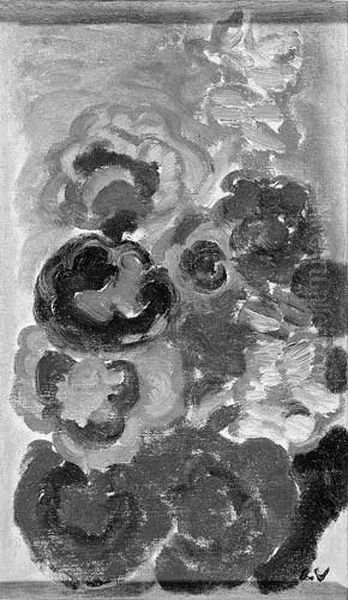
Femmes au bord de la mer (Women by the Sea): A recurring theme, these paintings often depict elegantly dressed women on beaches or promenades. They allowed Valtat to explore the interplay of figures, fashion, and the vibrant light and color of coastal settings.
Flowers Still Life (Various dates): Valtat produced numerous still lifes featuring flowers throughout his career. These works, such as Dahlias à la cruche en verre devant une tenture rideau (Dahlias in a Glass Pitcher before a Curtain, c. 1910), are celebrated for their lush color harmonies, energetic brushwork, and decorative qualities.
Young Women in the Garden (c. 1905): Housed in the Hermitage Museum, St. Petersburg, this painting exemplifies the idyllic garden scenes Valtat often painted, combining figures with luxuriant foliage in a vibrant, light-filled composition typical of his Fauvist period.
Le bois de Boulogne (The Bois de Boulogne): Depicting scenes from the famous Parisian park, these works often capture leisure activities and blend landscape with figure painting, rendered in his characteristic bright palette.
An Abandoned Farm: Landscape paintings like this demonstrate his interest in rural scenes, often imbued with a strong sense of place and rendered with expressive color and texture.
These examples, among many others, illustrate the range of Valtat's subjects and the consistent vibrancy and painterly quality that define his unique contribution to early modern art.
Later Life and Legacy
Louis Valtat continued to paint prolifically through the 1910s, 1920s, and 1930s. He divided his time between Paris, his home in the Choisel valley southwest of the capital, and his beloved property in Agay on the Mediterranean coast. His dedication to his art remained unwavering. However, his later years were marked by health challenges. He suffered from glaucoma, which progressively affected his eyesight. Despite this significant impediment, he continued to work for as long as possible, adapting his technique as needed, a testament to his profound commitment to painting. His active painting career largely concluded around 1940 due to his failing vision.
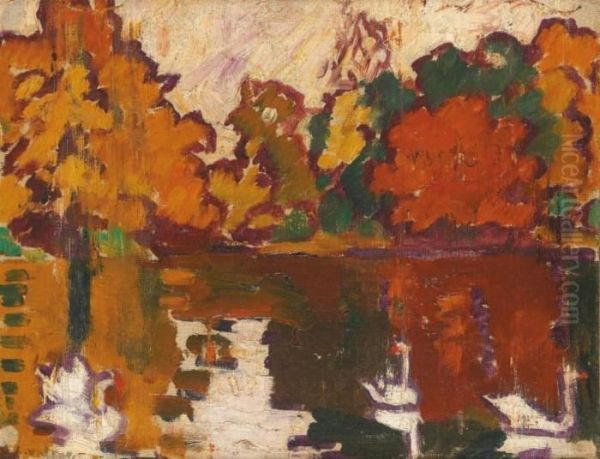
In recognition of his contributions to French art, Louis Valtat was awarded the Chevalier de la Légion d'Honneur (Knight of the Legion of Honour), one of France's highest civilian decorations. This official acknowledgment underscored the respect he had garnered within the art establishment over his long career. His dedication, even in the face of physical adversity, was noted by those who knew him, contributing to his reputation as an artist of high moral character deeply devoted to his craft.
Louis Valtat passed away in Paris on January 2, 1952, at the age of 82. While perhaps not achieving the same level of household fame as his contemporaries Matisse or Derain during his lifetime, his importance has been increasingly recognized by art historians and collectors. His son, Dr. Jean Valtat, played a significant role in preserving his father's legacy and documenting his work, contributing to the catalogue raisonné.
Valtat's legacy rests on his crucial role as a bridge between Impressionism/Post-Impressionism and Fauvism. He was an innovator in the use of color, pushing its expressive potential beyond naturalistic representation well before the Fauvist movement officially coalesced. His work influenced his contemporaries and provided a vital link in the chain of modern art's development. He remains admired for the consistent quality, vibrancy, and joyful energy that permeate his paintings.
Exhibitions and Collections
Throughout his career and posthumously, Louis Valtat's work has been featured in numerous important exhibitions and acquired by major museums and private collectors worldwide. His participation in the seminal 1905 Salon d'Automne remains a landmark event. He was also a regular exhibitor at the Salon des Indépendants from 1893 onwards and participated in exhibitions organized by the Belgian avant-garde group La Libre Esthétique in Brussels.
Significant posthumous exhibitions have helped solidify his reputation. A major retrospective covering his work from 1869 to 1952 (though his active career ended earlier) was held at the Petit Palais museum in Geneva in 1969. More recently, thematic exhibitions, such as one focusing on his Arcachon paintings at the Musée Yves Brayer in Les Baux-de-Provence in 2010, continue to explore specific aspects of his oeuvre. His work was also featured in gallery shows during his lifetime, including those organized by Ambroise Vollard and later by Galerie Druet and Galerie Durand-Ruel.
Today, Louis Valtat's paintings are held in the permanent collections of prestigious institutions across the globe. In France, his works can be found at the Musée d'Orsay in Paris, the Musée des Beaux-Arts de Bordeaux, and various regional museums. Internationally, notable collections include the Hermitage Museum in St. Petersburg, Russia; the Thyssen-Bornemisza Museum in Madrid, Spain; the Fitzwilliam Museum in Cambridge, UK; and numerous museums in the United States and elsewhere. The presence of his work in these major collections attests to his enduring significance in the history of art. Furthermore, his paintings continue to be sought after by private collectors and appear regularly at major art auctions.
Conclusion
Louis Valtat occupies a unique and important place in the narrative of modern art. Emerging from a solid academic background, he embraced the innovations of Impressionism and Post-Impressionism before forging his own path towards a more expressive and color-driven style. As a key precursor and participant in Fauvism, he helped revolutionize the use of color in painting at the dawn of the 20th century. His friendships with figures ranging from Renoir to Matisse place him at the crossroads of artistic generations. Though his style evolved with a degree of independence, his commitment to vibrant color, energetic brushwork, and capturing the beauty of landscapes, figures, and still lifes remained constant. Valtat's extensive body of work stands as a testament to a long, dedicated career and offers a visually rich bridge between the artistic worlds of the 19th and 20th centuries, securing his legacy as a significant contributor to French painting.